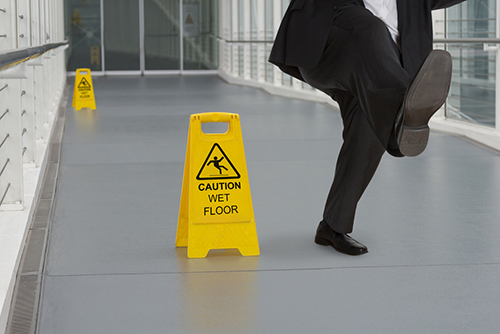
What to Do When an Employee is Injured
Workplace injuries happen. Whether minor or major, injuries can be frightening and disorienting for both the injured employee and the employer. In the event of an injury, it’s vitally important to act immediately based on a pre-established plan that addresses the needs of the employee.
As the employer, your response can make a difference in the employee’s well-being and their medical care. Therefore, it’s important that you know what to do in the event of an accident. Prompt care for the injured employee can dramatically influence health-related outcomes.
What can you do to be better prepared before an injury occurs?
Have a plan in place with procedures that help eliminate confusion and facilitate immediate medical care following a workplace injury.
- Develop an accident reporting process that works for the entire organization, so everyone has the necessary information to act appropriately in case of an injury.
- Post clear, easy-to-understand procedural guidelines throughout the workplace, and conduct regular safety training to reinforce these messages.
For more about developing a safety plan, download our whitepaper: Loss Control – Creating a Culture of Workplace Safety. Early intervention is always best.
Below are the steps you should take when an injury occurs:
- First and foremost, evaluate the need for medical assistance. For emergencies, immediately call 911. For non-emergency situations, contact and coordinate care with pre-arranged medical facilities as established with your workers’ compensation insurance carrier’s medical provider network. In-network care helps ensure prompt and efficient care for the employee.
- Collect the facts about the incident so you can communicate those details to your claims management professional. Be sure to document:
- Who was injured (including all contact information)
- What happened, where it happened, and what caused the injury
- What medical treatment was sought (from a Band-Aid applied by the supervisor to an ambulance call)
- Who witnessed the accident (including all contact information)
- Report the injury to your workers’ compensation provider. Ideally, claims should be reported within 24 hours. Some workers’ compensation insurance carriers allow you to report claims via phone or a dedicated hotline with nurses on staff. Others provide options for claim reporting via website or even email. Prompt reporting of injuries to your workers’ compensation provider is important to help injured employees get the medical care they need as quickly as possible.
After the fact
In the days and weeks following an employee’s injury, you can help support recovery by facilitating open communication between the injured employee, manager, medical provider and insurance carrier. It is important to be responsive to inquiries from all parties.
When a medical provider releases an injured employee to return to work in a limited capacity, you should be prepared to offer alternate duty. By keeping injured employees connected to their work and colleagues through alternative duties, you can help minimize downtime and even help speed recovery.
Many workers’ compensation insurance carriers offer tools to assist in developing an effective return-to-work program, which includes Alternate Duty Employment (ADE). Your carrier may also offer job site analysis services, which considers the technical skills and physical requirements of a specific job. With a thorough job site analysis, the employer can develop creative ways to moderate an injured employee’s activity.
You may also consider an ergonomic evaluation to help injured workers return to work. Ergonomics is the applied science of equipment design, most often used in the workplace to maximize productivity by reducing operator fatigue and discomfort. Ergonomic changes can help an injured employee return to work in a modified environment in which they can better function. Ask your workers’ compensation insurance carrier for ergonomics tips and resources specific to your type of business.
Throughout the process, be thoughtful
Always remember that injured workers are much more than just a claim with your insurance company; they are people. They are colleagues, spouses, friends, and parents. They want to return to work just as much as you want them back on the job. It’s important to demonstrate that your workers matter to the company as productive members of the team. By handling workplace injuries in a responsible, compassionate way, you can help build and retain your most important asset – your employees.
